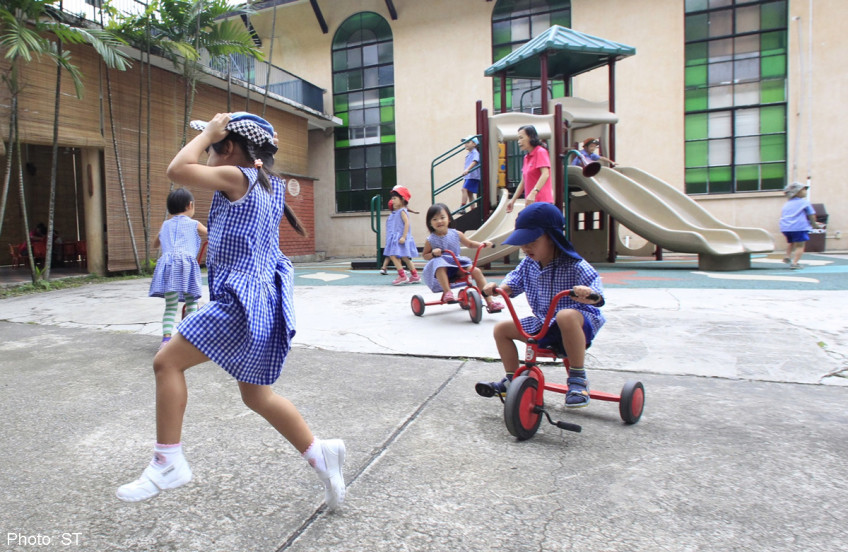What's pre-school's effect on kids? NIE skips to the chase

How does class size affect a child's learning experience? How does the teacher-child interaction influence the child's emotional development and cognitive skills?
These are some of the issues looked at in the first large-scale local study of how the pre-school environment affects children as they progress from Kindergarten One (K1) to Primary One (P1).
The Singapore Kindergarten Impact Project (Skip) study aims to recruit 1,500 K1 children from about 70 kindergartens.
It is conducted and funded by the National Institute of Education (NIE), which is working with pre-school experts from the Ministry of Education and the Early Childhood Development Agency.
Through Skip, NIE hopes to understand how teacher-child interaction and "structural factors" like teacher-child ratio and the physical environment, together with the child's home environment, influence his development and readiness for primary school.
Regarding the child's development, NIE will focus on areas such as motor skills, literacy, numeracy and socio-emotional development. The findings will help identify aspects of pre- school education that lead to positive outcomes, and will be shared as examples of good practices in the sector.
NIE's Dr Rebecca Bull, the study's principal investigator, said: "The findings will also be shared with educators at NIE and will ensure that our future pre-school teachers are receiving theoretical and practical knowledge based on up-to-date research in the local context."
The Skip study is longitudinal - the children will be assessed when they are in K1, then once more next year, and in 2017 when they are in P1.
During each period, they will take part in written and computer-based activities, each lasting 30 to 60 minutes, for five days.
Parents will be quizzed about their children's learning, while researchers will observe lessons in the kindergartens.
Experts and kindergartens welcomed having such a study.
Living Sanctuary Kindergarten principal Elsie Tan-Chua said: "Both the early childhood sector and primary schools can identify the gaps and work on a smoother transition for the children."
A spokesman for PAP Community Foundation, the largest kindergarten operator, said that when entering P1, some children may not have acquired adequate basic speaking and reading skills.
Dr Bull said the research team targeted kindergartens with different amounts of time spent on teaching mother tongue, to "address policy questions about factors that lead to better language and literacy development in English and mother tongue languages".
Some kindergartens said that given the short hours in class and parents speaking mainly English at home, some children end up having to take enrichment classes in mother tongue.
Dr Jane Ching-Kwan, chief executive of KLC International Institute which trains pre-school teachers, said: "The early years are a perfect time to learn multiple languages. The question, though, may be to what degree we expect children to learn and master the different languages."
Experts also said having a local study was important. Mr Lee Poh Wah, chief executive of Lien Foundation which has commissioned other studies on pre-school education, said: "A local study will reflect the unique socio-cultural settings and bilingual environments of Singaporean families."
Far Eastern Kindergarten has about one in five of its K1 children taking part in Skip. Principal Ang Chui Hwa said: "Some parents may not like the idea of their children being assessed over three years, but I think the study is useful and it's important to collect local data."
Tuition agency owner Kelly Goh, 31, who allowed her son to take part, said: "My child can have fun when taking part in the activities, and they do these in the kindergarten, so I think it's safe and I don't mind letting him join this study."
goyshiyi@sph.com.sg

This article was first published on June 1, 2015.
Get a copy of The Straits Times or go to straitstimes.com for more stories.